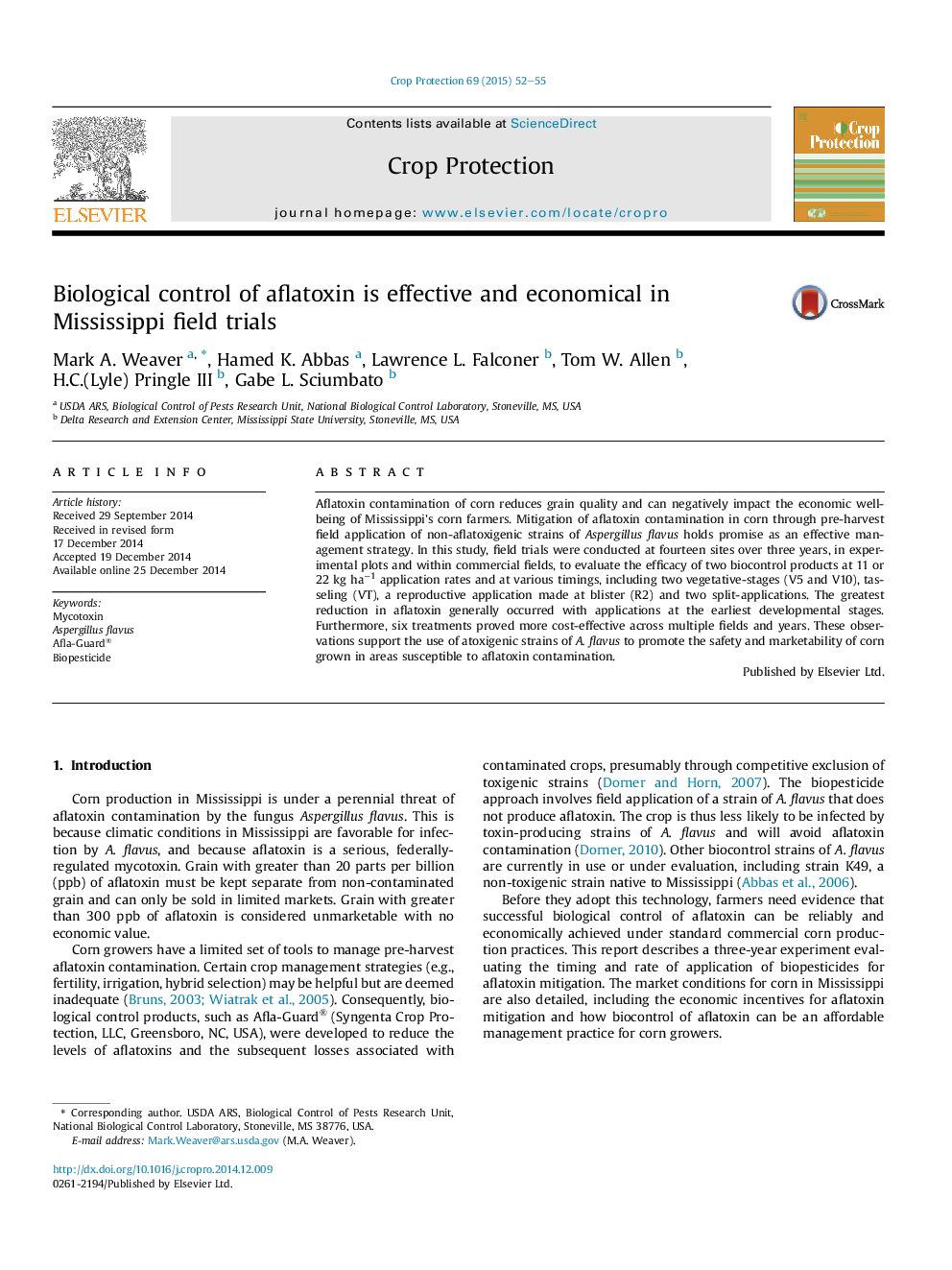| Article ID | Journal | Published Year | Pages | File Type |
|---|---|---|---|---|
| 4505847 | Crop Protection | 2015 | 4 Pages |
•Biological control of aflatoxin in corn was tested in 14 field trials over 3 years.•Aflatoxin mitigation was achieved by biocontrol under different management and weather conditions.•Early (V5) application of biocontrol products was generally most effective.•Across all fields and years, 6 biocontrol programs were cost-effective.
Aflatoxin contamination of corn reduces grain quality and can negatively impact the economic well-being of Mississippi's corn farmers. Mitigation of aflatoxin contamination in corn through pre-harvest field application of non-aflatoxigenic strains of Aspergillus flavus holds promise as an effective management strategy. In this study, field trials were conducted at fourteen sites over three years, in experimental plots and within commercial fields, to evaluate the efficacy of two biocontrol products at 11 or 22 kg ha−1 application rates and at various timings, including two vegetative-stages (V5 and V10), tasseling (VT), a reproductive application made at blister (R2) and two split-applications. The greatest reduction in aflatoxin generally occurred with applications at the earliest developmental stages. Furthermore, six treatments proved more cost-effective across multiple fields and years. These observations support the use of atoxigenic strains of A. flavus to promote the safety and marketability of corn grown in areas susceptible to aflatoxin contamination.
